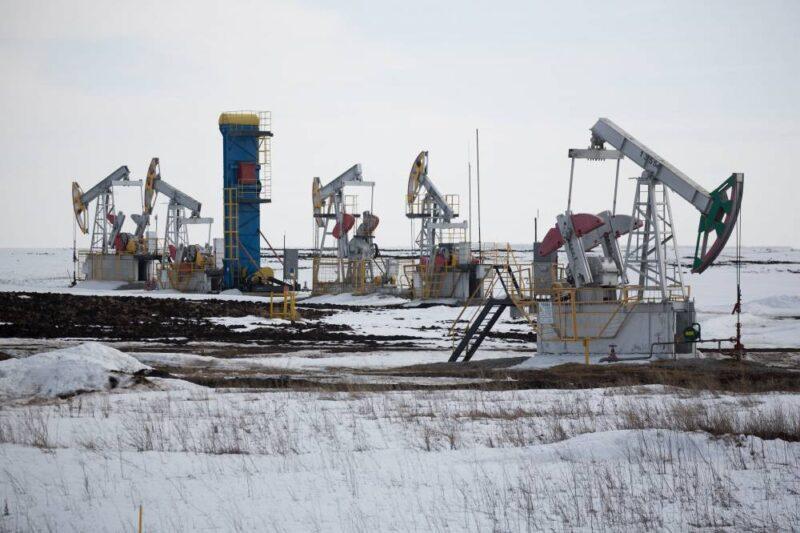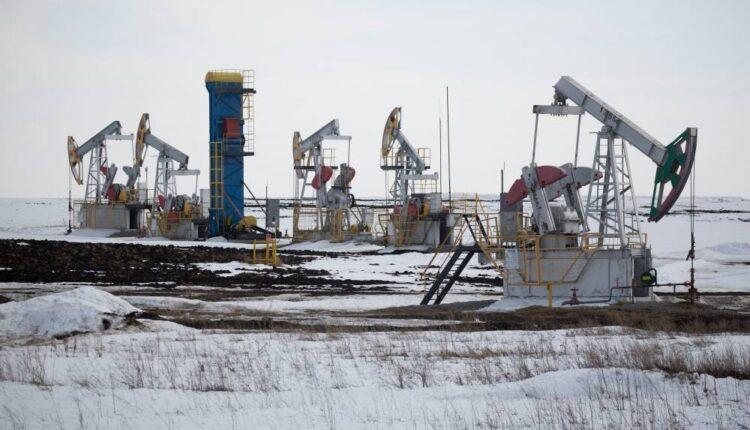
- Brent futures rose 56 cents, or 1.8%, to $32.30 a barrel by 0017 GMT after settling 0.8% higher on Monday.
- U.S. West Texas Intermediate (WTI) crude was up 47 cents, or 2.1%, at $22.88, having dropped 1.5% the previous session.
Oil pumping jacks, also known as "nodding donkeys," operate in an oilfield near Almetyevsk, Tatarstan, Russia, on Wednesday, March 11, 2020.Andrey Rudakov | Bloomberg | Getty Images
Oil prices rose on Tuesday after a U.S. agency said shale output in the world's biggest crude producer would fall by the most on record in April, adding to cuts from other major producers.
Brent futures rose 56 cents, or 1.8%, to $32.30 a barrel by 0017 GMT after settling 0.8% higher on Monday. U.S. West Texas Intermediate (WTI) crude was up 47 cents, or 2.1%, at $22.88, having dropped 1.5% the previous session.
The Organization of the Petroleum Exporting Countries, along with Russia and other producing countries — known as OPEC+ — agreed over Easter to cut output by 9.7 million barrels per day (bpd) in May and June, equal to about 10% of global supply before the viral outbreak.
With other producers, including the world's biggest, the United States, reducing output as well, the estimated reduction in production is about 19.5 million bpd.
But analysts, oil industry executives and others say no matter how the numbers are massaged the reduction will not be enough to match a contraction of around a third of global oil demand due to the outbreak.
Oil prices are still down by over 50% so far this year.
"These cuts, especially relative to the inflated production figures over the last month, will not bring the market back into balance unless we see a dramatic "V-shaped" economic recovery in the coming weeks," FOREX.com said in a note.
Inventories are expected to fill up fast even as some countries among the G20 agreed to buy oil for their national reserves.
Still, U.S. production is falling in tandem with a drop in prices and there are signs the coronavirus outbreak may have peaked in some areas of the world.
U.S. shale oil output is expected to have the biggest monthly drop on record during April, the U.S. Energy Information Administration (IEA) said on Monday.
Production has been sliding for several months, but the declines are expected to accelerate sharply in April with a loss of nearly 200,000 bpd of production, the IEA said.
That would bring shale oil output, which has been the driver of the sharp growth in U.S. production, to 8.7 million bpd.
Numerous U.S. producers, including majors like Exxon Mobil and Chevron, have said they will cut spending and expect to produce less crude in the coming months.
Source: cnbc.com

